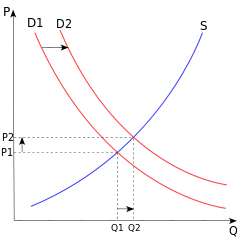Giffen Good: A giffen good is a good that as price rises, demand increases and, as price falls, demand decreases. The increase in demand stems from the income effect of the higher price outweighing the substitution effect. It is hard to find empiricial evidence about it but it can be applied to extremely poor people who have limited diet.
Suppose that you are very poor and you can't afford other alternative expensive foodstuff. On the other hand, the price of your basic foodstuff is increasing. In that situation, you will end up buying more your basic foodstuff. Because, it is the only foodstuff that you can afford.
Diagram for Giffen Good
Veblen Goods: A veblen good is a good that as price rises, demand increases and, as price falls, demand decreasse because of its exclusive nature and appeal as a status symbol. A veblen good has an upward-sloping demand curve like giffen good.
Studies suggest that people get more satisfaction from buying expensive goods and very expensive goods are indicator of having a hıgher status in society. Besides, consumers think that more expensive goods have better quality. Very expensive goods-such as designer jewelry, pricey watches, luxury cars can be classified as veblen goods.
The Basic Similarity and Difference Between Giffen Good and Veblen Good: For both giffen good and veblen good, as prices rises, demand increases. But, for veblen good, people demand more because the good is indicator of having a higher status in society and people think that it is expensive because it is a better quality. For giffen good, people demand more because the income effect outweighs the substitution effect.
